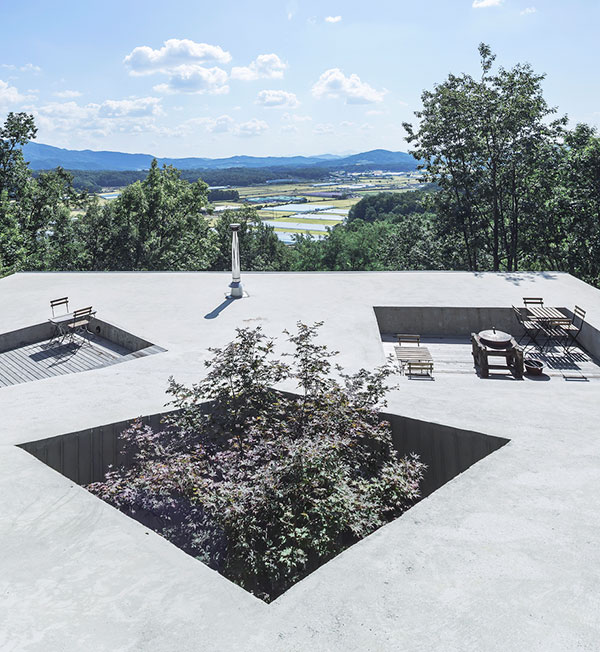
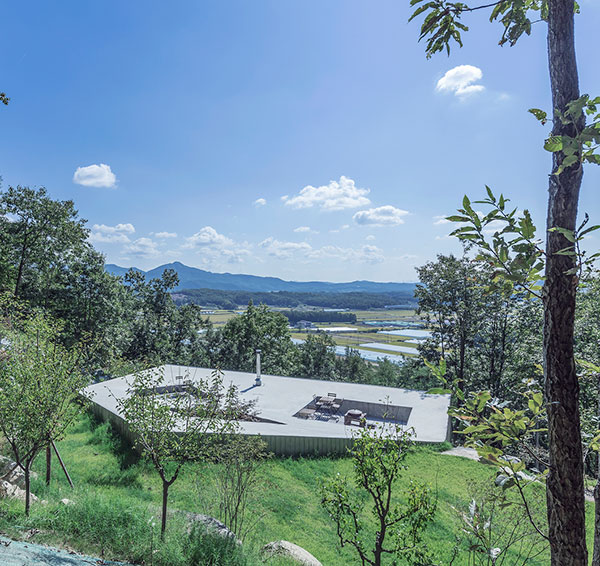
Tilt Roof House tries to respect the natural energy flow of the existing mountains and celebrates a primal relationship between experiential qualities of the surrounding nature and a building. By taking advantage of the steep slope around the site, the house blends with the topography and is partially embedded into the ground, while minimizing the excavation of the earth. The roof is tilted to follow the slope of the hill while disappearing into the ground.
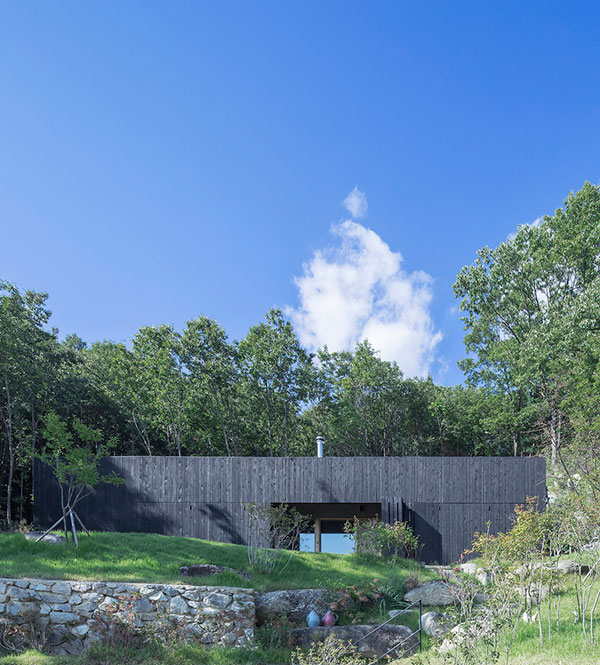
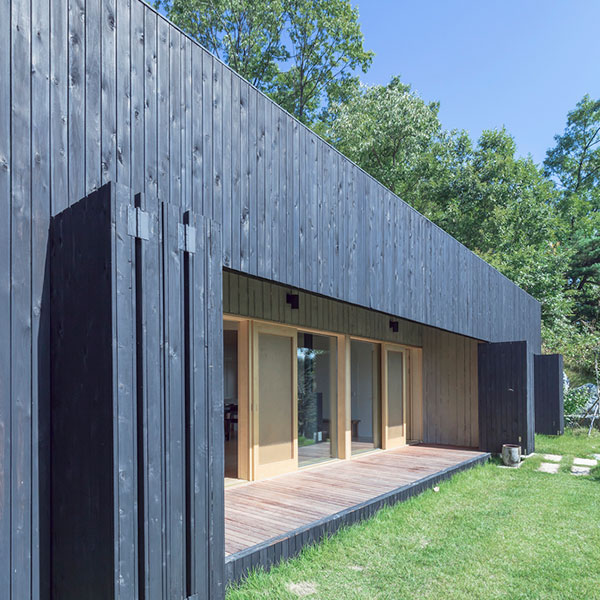
The subterranean Tilt Roof House is set amid peaceful mountains and rice fields an hour east of Seoul in Korea. The house shows our understanding and consideration of "Ki", which is the traditional term for the universal energy that permeates through everything.
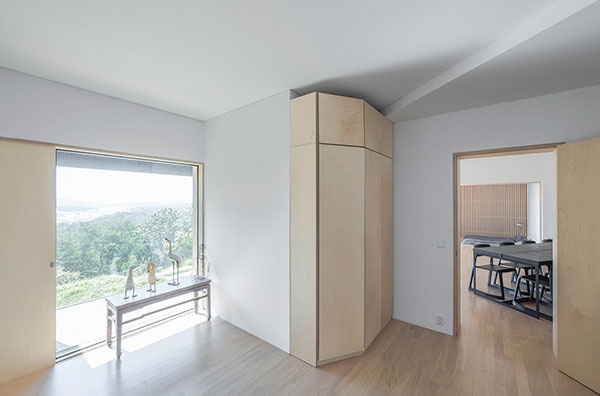
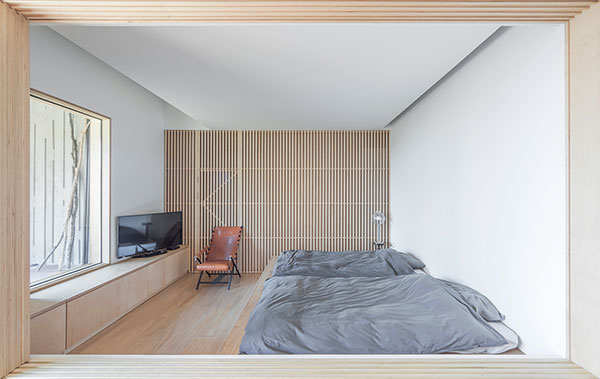
It is built with careful consideration of construction efficiency and the surrounding nature without disrupting the energy flow. Mass composition of this house is a result of the adaptation of the existing topography line from the north and the parallel line of the adjacent street in the main access area.
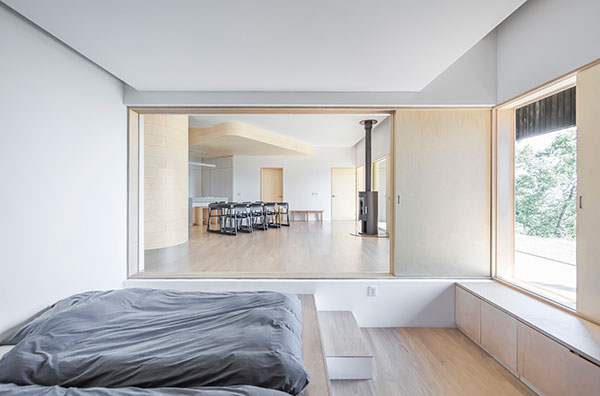
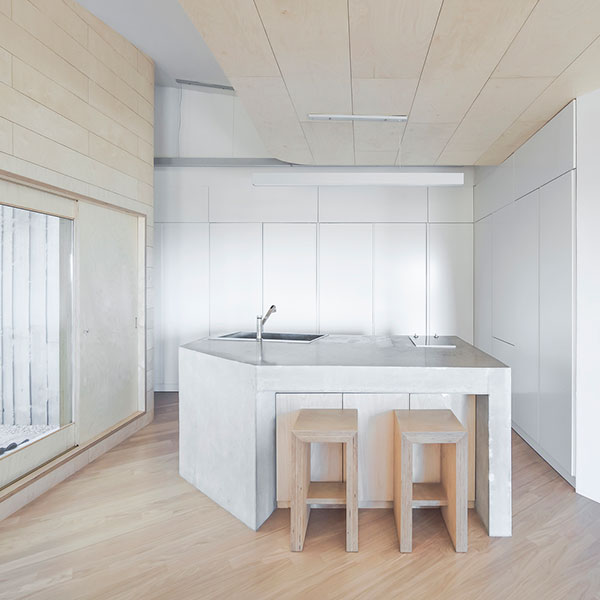
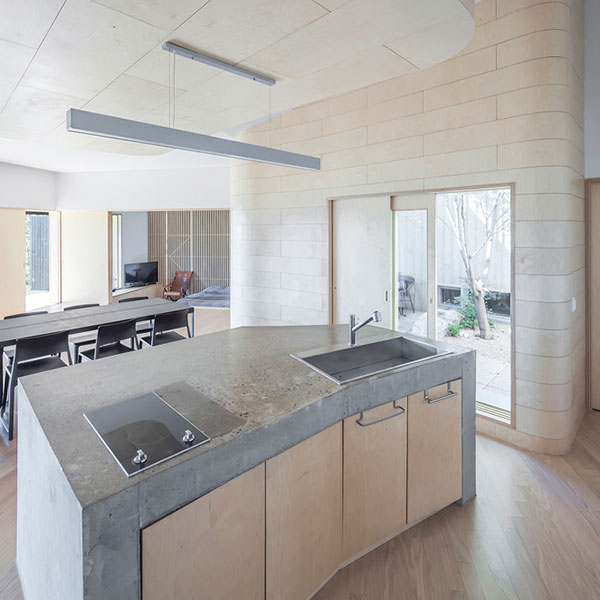
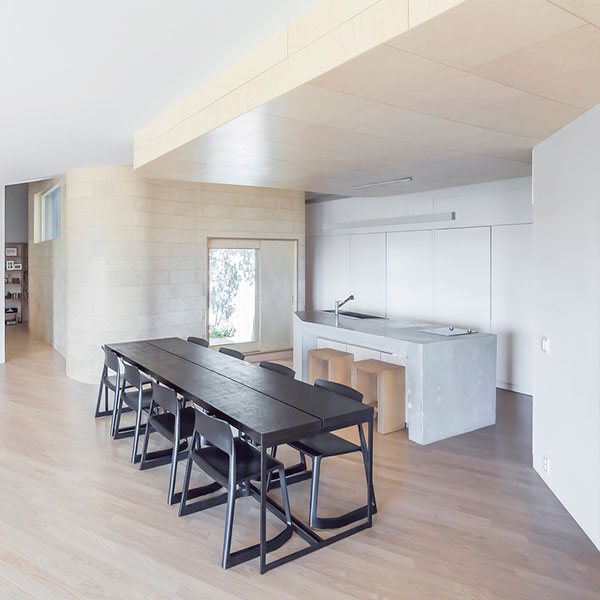
The house also utilizes the sloped roof-top as a terrace. It is punctuated by three square boxes: two recessed boxes and one courtyard box. The two partially recessed squares not only serve as outdoor furniture but also distinguish different programs, such as the master bedroom and kitchen underneath the terrace. The central courtyard allows natural light penetration and makes the interior space more desirable and breathable.
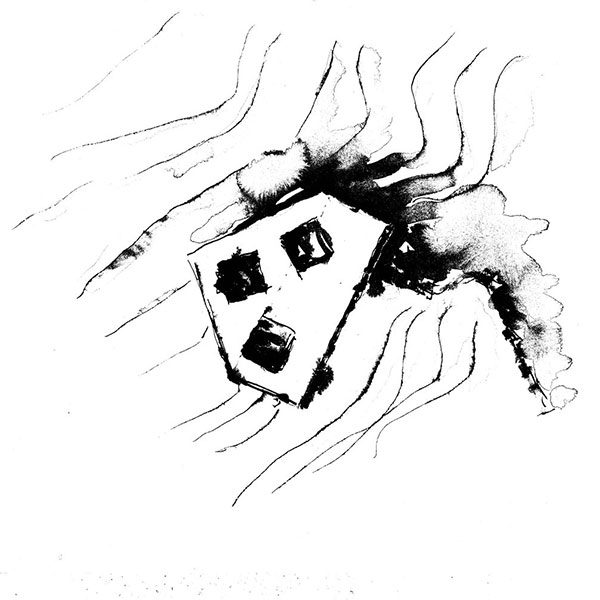
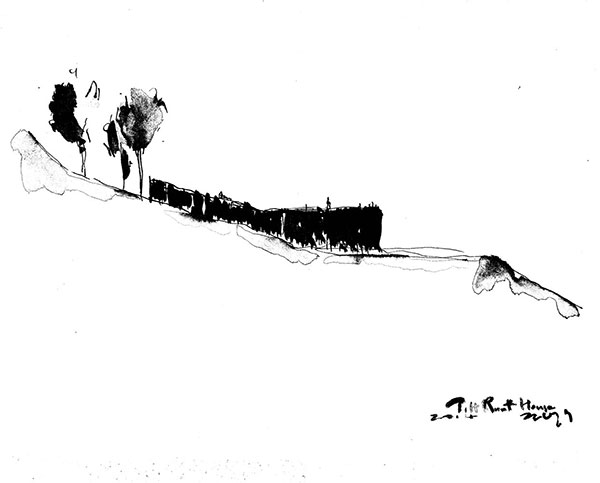
The heavy pour-in-place concrete and the pressure treated black-stained pine wood exterior is in contrast to the warm and ambient light created by the bright yellow birch plywood interior. The curvature of the interior wall along the central courtyard softens the pointed corners created by the triangular shape from the living room to the reading area. During the summer time, wind blows from south to north, inducing air circulation from the courtyard, where the kitchen is located creating cross-ventilation.
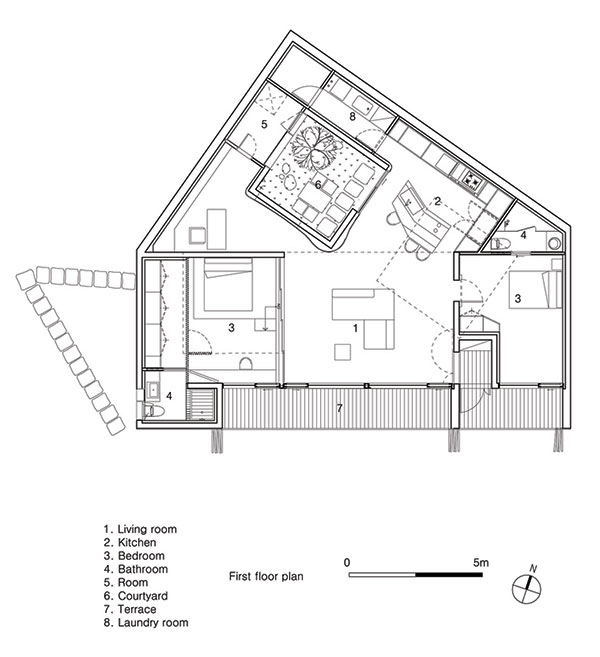
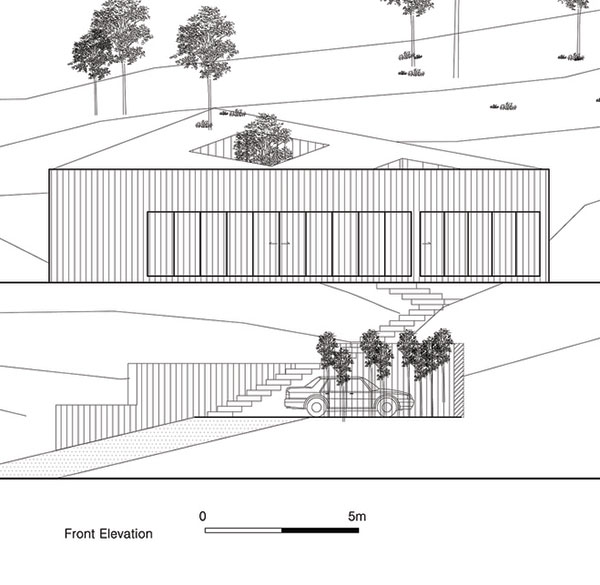
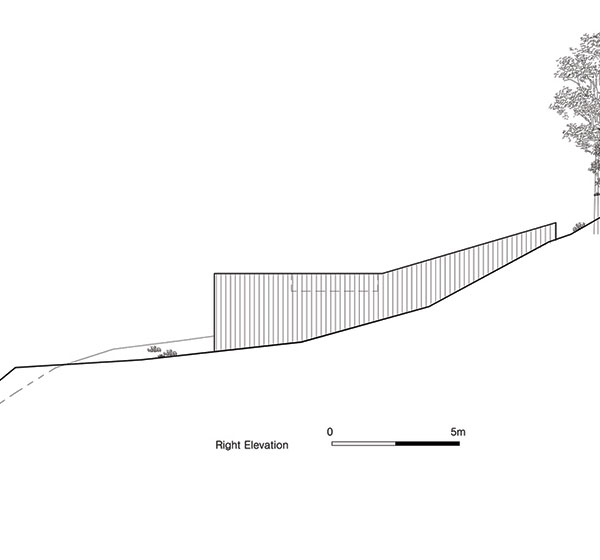
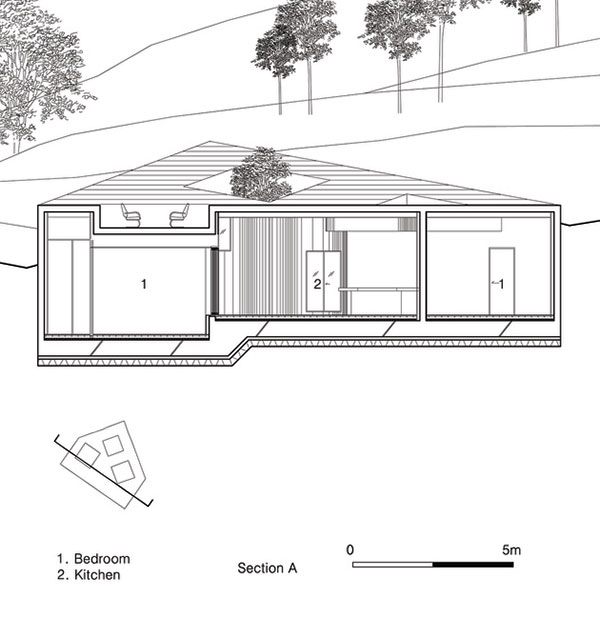
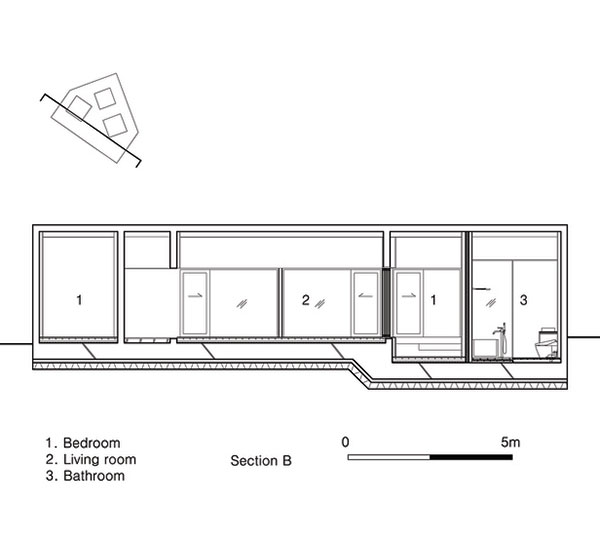
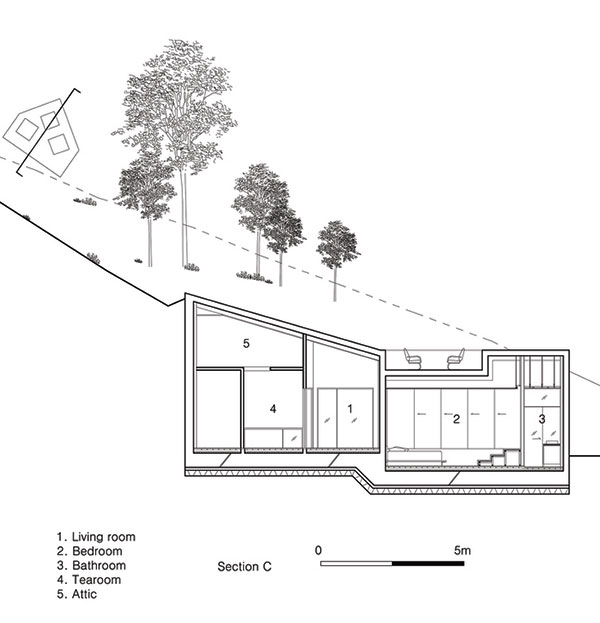
Architects
: BCHO Architects
Location
: Yangpyeong-gun, South Korea
Architect in Charge
: Byoung Cho, So-jin Kang
Area
: 161.78 m2
Project Year
: 2014
Photographs
: Sergio Pirrone
Other Participants
: Young-sung Jun, Sung-chul Hong
BCHO architects









